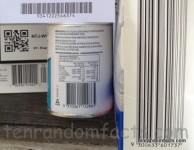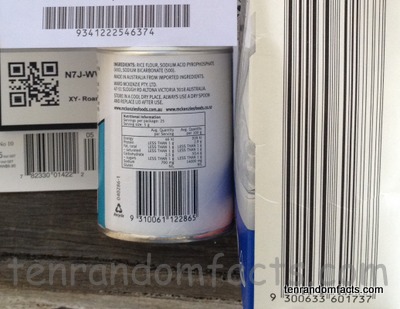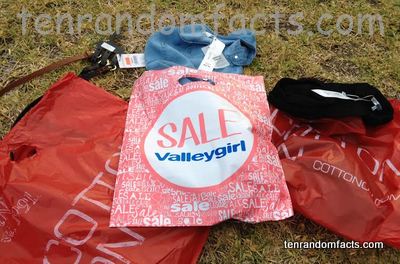
Barcodes completely changed the face of business.
- Barcodes are patterns of lines or two dimensional shapes that are usually printed onto a flat surface, and they can be read by specifically engineered machines.
- The primary idea and form of barcodes was designed in 1949, by friends Bernard Silver and Norman Woodland, both alumni of the Drexel Institute of Technology in Pennsylvania’s Philadelphia, in the United States, for which they received a patent three years later.
- ‘Barcode readers’, also known as ‘scanners’ are used to read barcodes, although many smart phones and other devices now have this capability.
- American David Collins created the first commercially used barcode, that he developed from 1959 onwards for identifying railcars, and it was named ‘KarTrak’, and the stripes were coloured red and blue and were able to be read by a scanner.
- Barcodes are said to have been loosely based on the Morse code system, by means of lengthening the dots and dashes into wide and narrow stripes, although inventors Woodland and Silver developed it into what appeared like a bull’s eye, while the reading machine used was based on technology used in the film industry.
- Barcodes are typically used to categorise and identify objects and individual people across many industries, and the information is usually compiled in a database.
- The grocery industry became interested in the use of barcodes in 1966, and they were introduced to retailers starting mid 1974, with a packet of gum being the first ever object to be scanned, although uptake of the new technology was slow, and it was not until the 1980s that it was more commonly used.
- The most economically viable and practical barcode scanners generally use a light sensor and lens, in conjunction with decoding technology, to interpret the code.
- Barcodes are highly practical as they allow for easier locating and managing of items in a retail environment, and changes that affect each item stocked are readily made, by entering the information in the database.
- There are many variants of barcodes, that can be both linear and square-based, among other shapes; with each variant having a specific name, such as ‘QR code’ or ‘Code 93’.
Bibliography:
Barcode, 2015, Wikipedia, http://en.wikipedia.org/wiki/Barcode
Barcode History: 5 Things You Didn’t Know About Barcodes, 2012, Scandit, http://www.scandit.com/2012/03/20/barcode-history-5-things-you-didn%E2%80%99t-know-about-barcodes/
Barcode History, 2015, Barcodes Inc, http://www.barcodesinc.com/articles/barcode-history.htm
Seideman T, Barcodes Sweep the World, 2011, Barcoding Incorporated, http://www.barcoding.com/information/barcode_history.shtml









